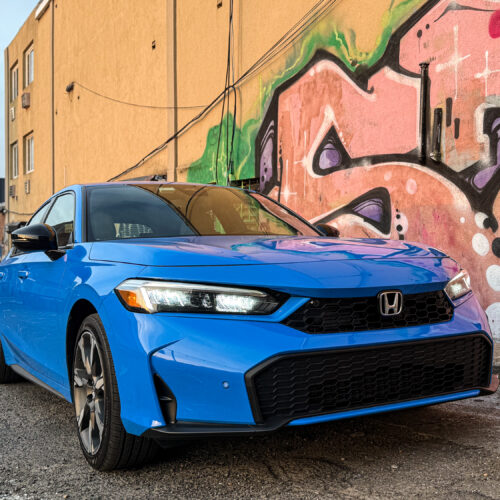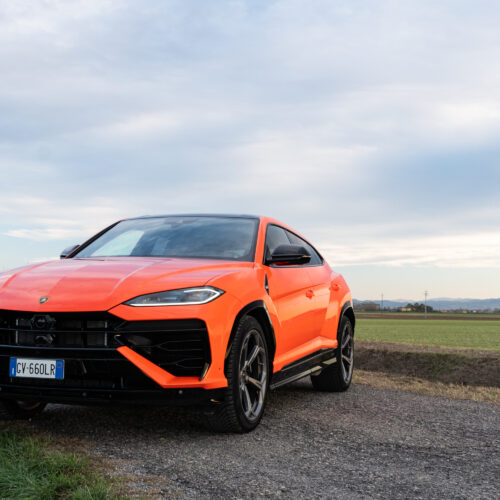I drove Toyota's new Crown Signia wagon. It's Lexus-level luxury at a surprisingly good price.

Benjamin Zhang/Business Insider
- I drove the new 2025 Toyota Crown Signia midsize hybrid SUV.
- I was impressed by its efficient hybrid powertrain, refined luxury, and great wagon looks.
- Although refined and efficient, the Crown Signia isn't very dynamic to drive.
The Crown is Toyota royalty, having proudly adorned the Japanese brand's flagship sedan since 1955.
It re-launched in the US in 2023 after a 50-year absense as an oddball crossover sedan, and is now featured on a new crossover wagon: The Crown Signia Toyota.
I recently drove the midsize Crown Signia to see how it stacks up against rivals like the Subaru Outback, Hyundai Santa Fe, and Nissan Murano.
I was impressed by the Japanese-made family hauler's high-quality interior, hybrid drivetrain, and solid value.

Benjamin Zhang/Business Insider
My fully-loaded Crown Signia Limited loaner started at $47,990. Freight fees and a handful of tech options raised the as-tested price to $52,074.
The Crown Signia is a bit more expensive than a fully-loaded Subaru Outback, which tops out at around $45,000, but it's still cheaper than the last Nissan Murano we tested, which cost $55,000.

Benjamin Zhang/Business Insider
It maintains the long-tapered side profile of a traditional wagon without negatively affecting rear headroom and cargo capacity. In fact, the roofline kind of reminds me of Porsche's now-defunct Panamera Sport Turismo wagon.

Benjamin Zhang/Business Insider
Up front, the Crown Signia features Toyota's attractive Hammerhead, which is also found on models like the Camry and Prius.

Benjamin Zhang/Business Insider
The 188 horsepower, naturally aspirated inline-four-cylinder engine is paired with a 180-horsepower electric motor, driving the front wheels through Toyota's electronically controlled continuously variable transmission.
Out back is a small 1.15 kWh Nickel Metal Hydride battery pack, and a rear axle-mounted 54 horsepower electric motor that gives the Crown Signia an on-demand electronic all-wheel drive system.
Total system output is 240 horsepower.
It's a similar setup to the latest Toyota Camry and Highlander hybrid.
The 4,200-lb Crown Signia boasts EPA fuel economy ratings of 39 mpg city, 37 mpg highway, and 38 mpg combined. That's a whopping 16 mpg more than the non-hybrid Nissan Murano and four mpg more than the comparable Hyundai Santa Fe Hybrid.

Benjamin Zhang/Business Insider
Despite delivering solid acceleration off the line with a 0-60 time of 7.1 seconds according to Toyota, speed and handling prowess are not the Crown Signia's primary selling points.
In fact, its engine, like that of most vehicles powered by the Toyota Hybrid System, can be uncharacteristically loud under hard acceleration. But that's only if you keep your right foot planted, trying to wring every horsepower out of its engine.
Avoid driving it like you're starring in the next Fast and Furious film, and the Crown Signia will reward you with a quiet and refined experience worthy of a much more expensive luxury car.

Benjamin Zhang/Business Insider
The Crown Signia combines the thoughtful functionality and build quality of the Camry sedan with the styling and high-class materials worthy of Toyota's Lexus premium brand.
Cabin ergonomics are impeccable, with a great mix of logically located digital and physical controls. Soft-touch materials have been strategically placed at high-contact areas. There is also plenty of in-cabin storage with its ingenious center console-mounted vertical wireless phone charger, the best I've ever used.
My test car came equipped with a large panoramic glass roof that looks great but strangely does not open.

Benjamin Zhang/Business Insider
The Crown Signia's tech suite is built around a 12.3-inch digital instrument display in front of the driver and a 12.3-inch infotainment touchscreen mounted atop the center stack. Both are standard on all trims.
The Toyota Audio Multimedia system is one of the most idiot-proof systems on the market. The navigation map is the default screen, and submenus are kept to a minimum.
All Crown Signias come standard with wireless Apple CarPlay and Android Auto.
They also all come standard with the Toyota Safety Sense 3.0, which includes adaptive cruise control (DRCC), lane departure alert with steering assist, and a pre-collision system with pedestrian detection.
Toyota's adaptive cruise control and lane centering system, although not hands-free, has seen great improvement in recent years. Overall, it's pretty simple to use, does a good job of keeping you centered in the lane.

Benjamin Zhang/Business Insider
The heat and ventilated seats were not only beautifully stitched but also incredibly comfortable.

Benjamin Zhang/Business Insider
The leather-lined rear cabin delivers a spacious 37 inches of legroom, comparable to a premium economy seat on an airplane. The rear bench is also heated, and its passengers have access to a pair of USB-C sockets.

Benjamin Zhang/Business Insider
With 25 cubic feet of cargo space behind the rear seat, the Toyota offers eight cubic feet less than the Nissan Murano and Subaru Outback.

Benjamin Zhang/Business Insider
As wagons grow increasingly rare in the automotive marketplace, it's refreshing to see a major mainstream brand not only introduce a wagon, but also one so beautifully put together.
The Crown Signia, sold in Toyota's homeland as the Crown Estate, had a lot to live up to considering the nameplate it wears. But it's come through with flying colors.
Toyota has given America a most unexpected midsize wagon that's stylish, refined, efficient, and, at a fully loaded price of $52,000, solid value for money.


